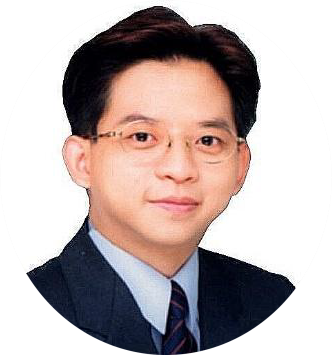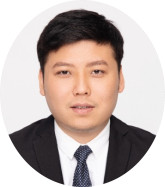keynote SpeakerS

Wannawit Taemthong
King Mongkut's University of Technology North Bangkok,
Thailand
|
Biography |
Prof. Wannawit Taemthong, Ph.D., is a distinguished civil engineer and professor at King Mongkut's University of Technology North Bangkok (KMUTNB), renowned for his expertise in cost control, productivity enhancement, and sustainable construction methods. With a rich academic background from esteemed institutions like the University of Michigan and the Asian Institute of Technology, his knowledge transcends borders. Prof. Taemthong has led numerous projects focused on advancing sustainable infrastructure and energy-efficient constructions, including green building renovation and energy-saving townhouse development. A prolific researcher and author, he has significantly contributed to the discourse on green building technologies and air quality improvement strategies in educational settings, with key publications such as "An analysis of green building costs using a minimum cost concept" (2019) and "Air quality improvement using ornamental plants in classrooms" (2021). Committed to education, he mentors the next generation of civil engineers, instilling in them a passion for innovation and sustainability, and his dedication to excellence and advocacy for environmentally-friendly practices have earned him respect.
Speech title "Architectural Work Planning in High-Rise Construction Using the Repetitive Scheduling Method (RSM)"
Abstract-This study presents a scheduling improvement approach for repetitive architectural tasks in high-rise construction using the Repetitive Scheduling Method (RSM). Field data were collected from a 44-story office building project in Bangkok, focusing on four key activities: bathroom wall construction, corridor wall plastering, floor leveling, and ceiling frame installation. Analysis revealed that the traditional Critical Path Method (CPM) was inefficient due to sequential dependencies and extended waiting times, particularly from MEP installations. By applying RSM, the construction sequence was restructured to enable a more continuous workflow. This adjustment led to an 18% reduction in construction duration—saving 32 days—and improved labor productivity. Additionally, subcontractor labor costs were significantly reduced, yielding a 69% profit margin. The findings suggest that RSM offers a more effective planning strategy for managing repetitive architectural works, especially when coordinated with other trades. This method enhances time management, supports cost control, and can be adapted to similar high-rise building projects to promote efficient and sustainable construction practices.

I-Tung Yang
National Taiwan University of Science and Technology, Taiwan
|
Biography |
Dr. I-Tung Yang is currently a Professor of Civil and Construction
Engineering at the National Taiwan University of Science and Technology
(Taiwan Tech). He obtained his Ph.D. in Civil Engineering in 2002, an
M.S. in Industrial and Operations Engineering, and another M.S. in
Construction Engineering and Management, all from the University of
Michigan, Ann Arbor. Dr. Yang was promoted to the position of Professor
in 2012. His professional journey includes significant roles such as
serving as the President of the Taiwan Construction Research Institute
from 2015 to 2018. Following that, from 2018 to 2021, he acted as the
Department Head and concurrently served as the Director of the Ecology &
Disaster Prevention Center and the Construction Occupational Health &
Safety Center at Taiwan Tech. Notably, Dr. Yang has been recognized for
his achievements and has been included in Stanford's list of the World's
Top 2% Scientists. He led the Chinese Taipei APEC Engineer/IPEA
Monitoring Committee from 2021 to 2022. Presently, he holds the role of
Associate Editor for the KSCE Journal of Civil Engineering and chairs
the Information Technology Committee of the Chinese Institute of Civil
and Hydraulic Engineering. Additionally, he actively participates in the
peer review process for 50+ international journals.
Speech title "Pavement Maintenance and Rehabilitation Optimization:
Integrating Data-Driven Modeling and Meta-Heuristic Algorithms"
Abstract-Pavement maintenance and rehabilitation (M&R) are critical for
ensuring road durability, safety, and user comfort. However, traffic
loads, environmental conditions, and budget constraints pose significant
challenges in M&R decision-making. This study proposes a multi-objective
optimization framework, MOPMS (Multi-Objective Pavement Maintenance
Strategy), to enhance the selection of M&R strategies. The first phase
develops a deterministic pavement deterioration model to predict future
Pavement Condition Index (PCI) values. This model is then integrated
with meta-heuristic algorithms to optimize M&R planning over a time
horizon, maximizing PCI while minimizing costs. The second phase
compares two MOPMS models using NSGA-II (Non-dominated Sorting Genetic
Algorithm II) and MOPSO (Multiobjective Particle Swarm Optimization)
algorithms, evaluating their performance through hypervolume metrics.
The results provide valuable insights for optimizing pavement
maintenance decisions, improving cost efficiency, and supporting road
engineers in selecting effective long-term strategies.

Zihe Gao
Zhengzhou University, China
|
Biography |
Prof. Zihe Gao is currently a full professor at the School of Civil Engineering, Zhengzhou University. He received his Ph.D. in Safety Science from the University of Science and Technology of China (USTC), during which he also participated in a joint Ph.D. program with Ghent University, Belgium. Prof. Gao’s research interests lie in tunnel fire dynamics, underground space fire safety, fire prevention technology, and multi-hazard risk assessment in civil engineering. His recent work centers on disaster prevention and mitigation strategies in complex built environments, with a particular focus on fire-induced hazards in underground spaces and their cascading effects. He has led multiple national and provincial-level research projects, including those funded by the National Natural Science Foundation of China (NSFC), and has developed advanced methods for risk modeling, early warning, and resilience assessment under compound disaster scenarios triggered by fires. He has published more than 60 peer-reviewed papers, with representative works featured in prestigious international journals such as Tunnelling and Underground Space Technology, Energy, International Journal of Heat and Mass Transfer. His research has made significant contributions to understanding fire behavior in spatially constrained environments and improving the reliability of fire risk modeling and mitigation strategies.

Pen-Chi Chiang
National Taiwan University, Taiwan
|
Biography |
Dr. Chiang began engaging in teaching and research activities in National Taiwan University since he obtained PhD degree from the Department of Civil Engineering, Purdue University, USA in 1982. Currently, he is a Distinguished Professor of Graduate Institute of Environmental Engineering, National Taiwan University, a Director of Carbon Cycle Research Center of National Taiwan University, a BCCE of American Academy of Environmental Engineers and Scientists (AAEES), a Fellow of Water Environment Federation (WEF), and a Diplomat of the American Academy of Water Resources Engineers of the American Society of Civil Engineers (ASCE). He has been actively involved the international and national academic associations served as the Board of Director (1987-2007), Executive Committee (2001), Academic Committee (2008-present), WEF; Chairman, IAWQ Specialized Conference (2001); President, Chinese Institute of Environmental Engineering (2004-2006); and AIChE Local Chapter (2009-present). Dr Chiang is known for his work in physicochemical treatment such as carbon adsorption, membrane and ozonation processes. In addition, he was also devoted to the research projects in the area of carbon capture technology, integrated watershed management, and sustainability for energy and industrial development. He has received numerous awards for research achievements, including Outstanding Research Award, National Science Council (1988-1999), Distinguished Chinese Institute of Engineer Research Award (1993), Outstanding Chinese Institute of Environmental Engineering Research Award (1993, 1995), Best Paper Award, Environmental and Water Resource Institute, ASCE (2005), and Best Paper Award, Chinese Institute of Environmental Engineering (2011, 2014). Dr Chiang has published more than 200 paper papers in the above area since 1990.